Vasopressin innervation of the mouse (Mus musculus) brain and spinal cord
- PMID: 21456024
- PMCID: PMC3939019
- DOI: 10.1002/cne.22635
Vasopressin innervation of the mouse (Mus musculus) brain and spinal cord
Abstract
The neuropeptide vasopressin (AVP) has been implicated in the regulation of numerous physiological and behavioral processes. Although mice have become an important model for studying this regulation, there is no comprehensive description of AVP distribution in the mouse brain and spinal cord. With C57BL/6 mice, we used immunohistochemistry to corroborate the location of AVP-containing cells and to define the location of AVP-containing fibers throughout the mouse central nervous system. We describe AVP-immunoreactive (-ir) fibers in midbrain, hindbrain, and spinal cord areas, which have not previously been reported in mice, including innervation of the ventral tegmental area, dorsal and median raphe, lateral and medial parabrachial, solitary, ventrolateral periaqueductal gray, and interfascicular nuclei. We also provide a detailed description of AVP-ir innervation in heterogenous regions such as the amygdala, bed nucleus of the stria terminalis, and ventral forebrain. In general, our results suggest that, compared with other species, the mouse has a particularly robust and widespread distribution of AVP-ir fibers, which, as in other species, originates from a number of different cell groups in the telencephalon and diencephalon. Our data also highlight the robust nature of AVP innervation in specific regulatory nuclei, such as the ventral tegmental area and dorsal raphe nucleus among others, that are implicated in the regulation of many behaviors.
Copyright © 2011 Wiley-Liss, Inc.
Figures
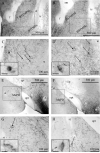

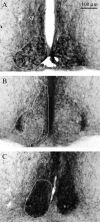

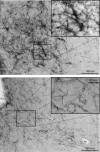

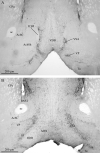
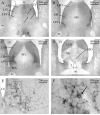
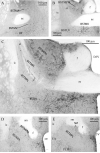
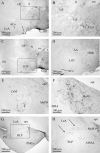
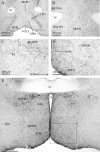
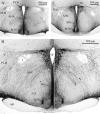
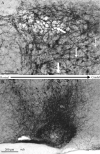

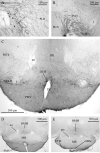
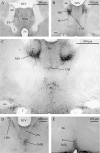

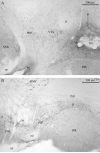

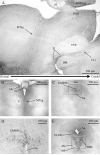

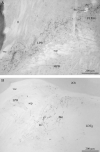
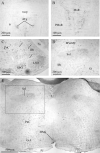

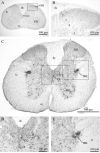

References
-
- Abrahamson EE, Moore RY. Suprachiasmatic nucleus in the mouse: retinal innervation, intrinsic organization and efferent projections. Brain Res. 2001;916:172–191. - PubMed
-
- Albers HE, Rowland CM, Ferris CF. Arginine-vasopressin immunoreactivity is not altered by photoperiod or gonadal hormones in the Syrian hamster (Mesocricetus auratus). Brain Res. 1991;539:137–142. - PubMed
-
- Andresen MC, Kunze DL. Nucleus tractus solitarius—gateway to neural circulatory control. Annu Rev Physiol. 1994;56:93–116. - PubMed
Publication types
MeSH terms
Substances
Grants and funding
LinkOut - more resources
Full Text Sources
Molecular Biology Databases
Miscellaneous

